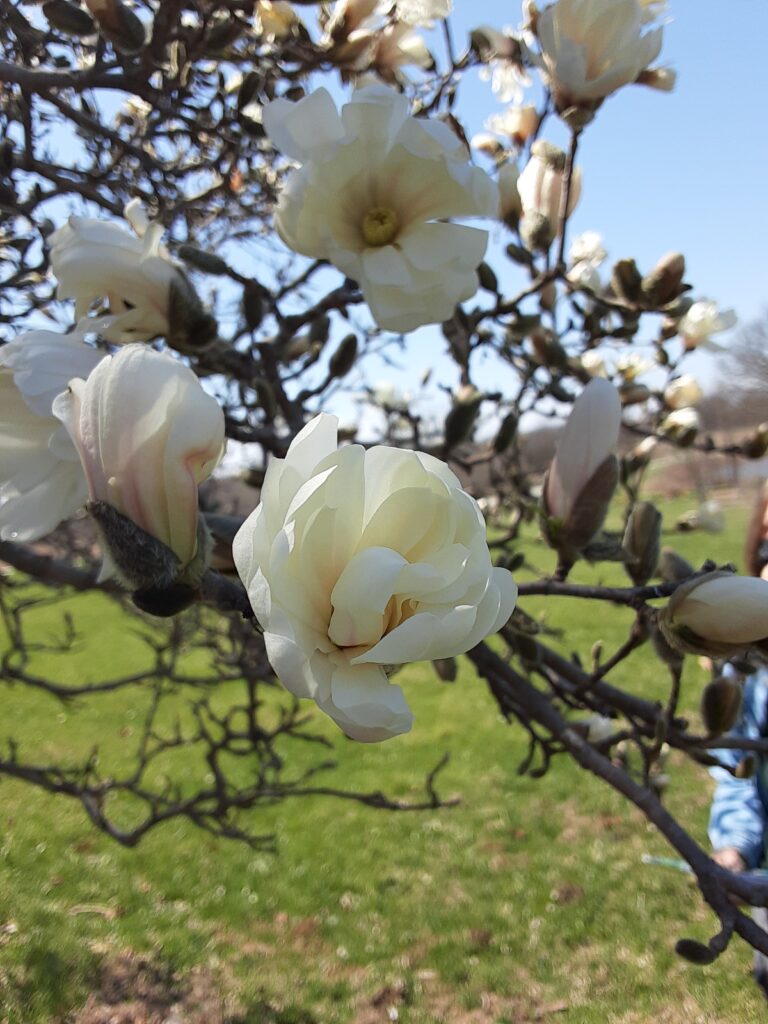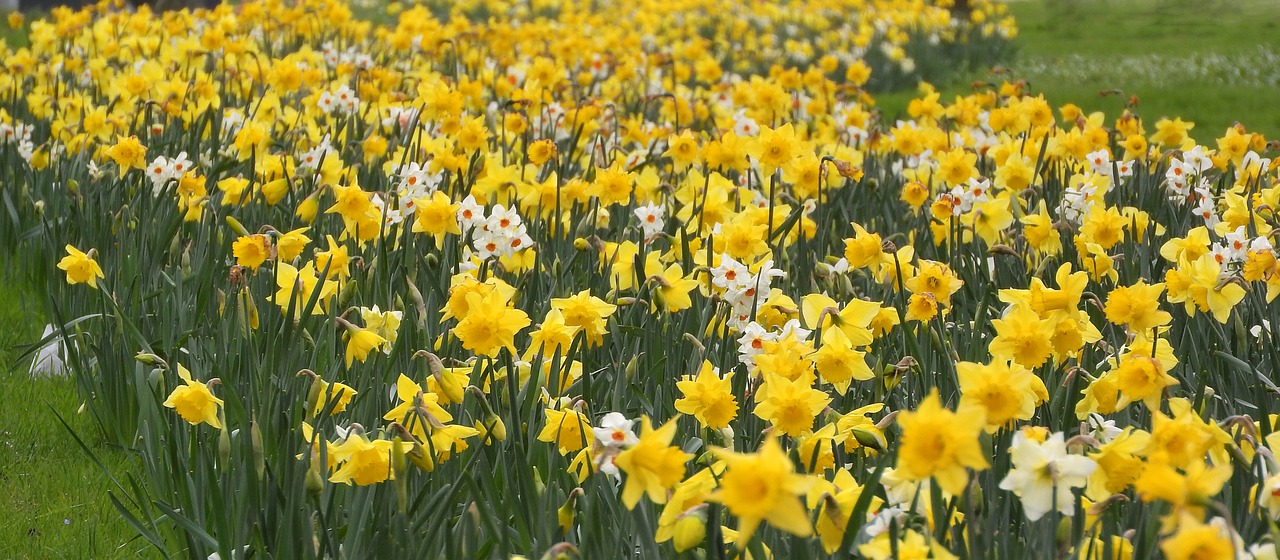If you want to take a break from garden cleanup to actually enjoy a garden, Powell Gardens reopens to the public this Thursday, April 1, 2021. (Members have been able to visit for a while.) What’s blooming in the gardens right now? A sea of daffodils and other early flowering bulbs.

Daffodils are blooming here in town, too, but not on this scale. This yellow slash includes literally thousands of daffodils.
Gardener Marissa Adams informs me that the drifts surrounding the Visitor’s Center were installed in 2015 by a team of volunteers using those excellent long-handled bulb planters that look like pogo sticks. The flowers return reliably each year, unlike tulips.
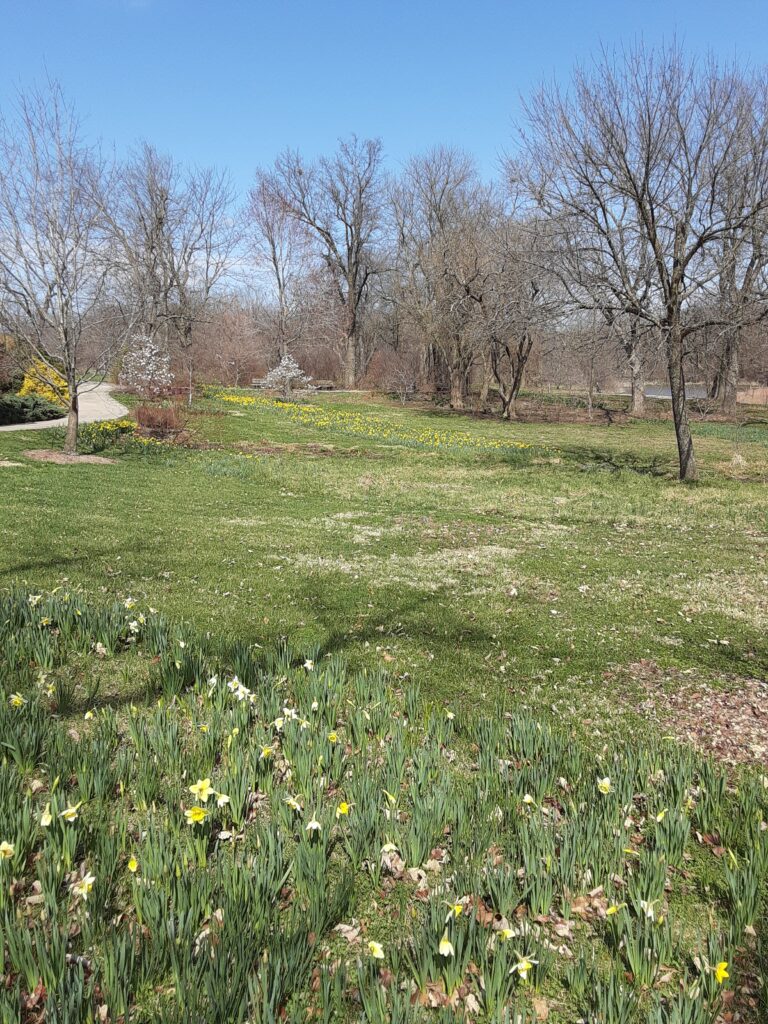
Also unlike tulips, daffodils do not appeal to rabbits. This is great! Daffodils contain a chemical lycorine, which is toxic to animals. Daffodils aren’t the only ones. The UK’s Rabbit Welfare Association website’s list of plants toxic to rabbits includes many familiar flowers. Their focus is on keeping pet rabbits safe, but if you have problems with rabbits, as I do, the information could be useful. (I imagine the rabbits will just avoid most of these. I wouldn’t worry much about poisoning them. )
I’d pretty much given up on bulbs, but I’m starting to realize how many other bulbs besides tulips could be incorporated into my plans.
When bulb-planting time comes in the fall, I’ll have forgotten how the garden looks now. I’m going to take some pictures to remind me where the bare spots are and where it would be nice to see some bulbs next spring.
I love seeing color return, first the grass, then daffodils and forsythia and star magnolia. This got me wondering, why are most early flowers mostly yellow or white? Why are so few pink or red? I suspect is this has something to do with sensory equipment of early-season pollinators.
I found this is from the personal blog of an environmental educator named Donna Long:
“The first flowers of spring are often white or yellow because of who pollinates them. The majority of early spring pollinators are flies. Flies lack color vision, meaning they can’t see scores of colors the way we do.
“White and yellow reflect plenty of light. The white and yellow are reflected as very light ‘colors’ against the green background of leaves of trees, shrubs, grasses, etc. All that green may just look dark and indistinguishable to flies.”
However, I cannot confirm that this is true. I did see bees buzzing in the cups of the flowers on the walk from the Island Garden to the Woodland Garden. I was a little surprised, because the temperatures are still brisk, with 29F forecast for Wednesday night.
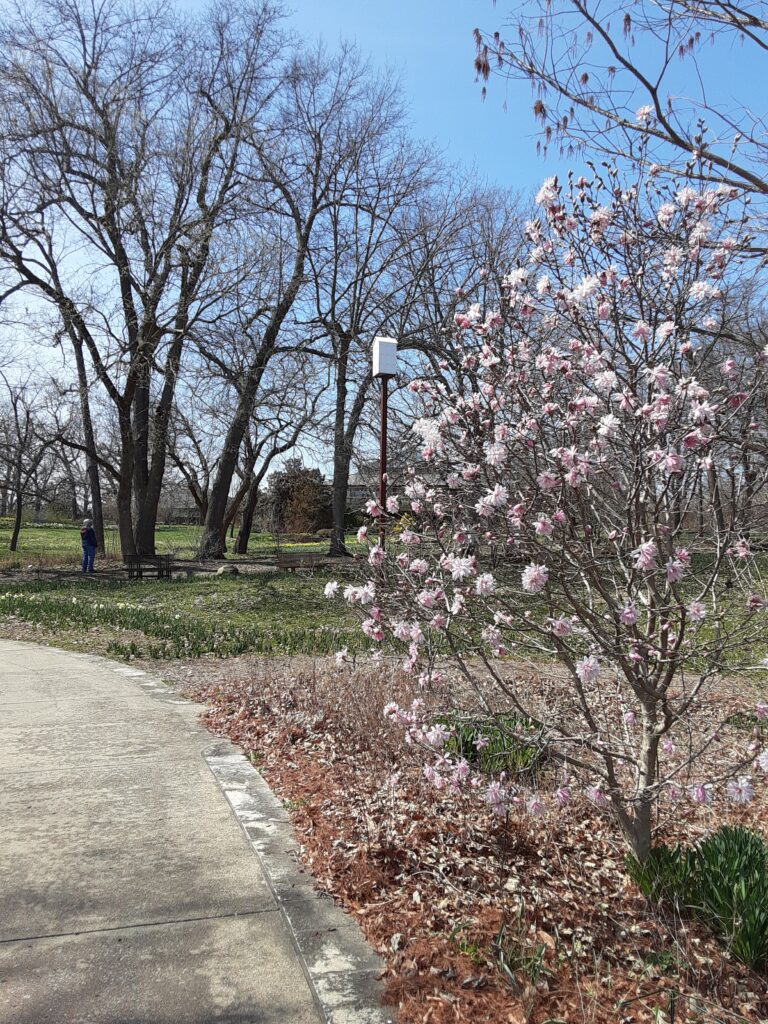
In the Island Garden, the palette of yellow and green expands to include blue: tiny grape hyacinths, scilla, and a bed of purple pansies that survived the winter.
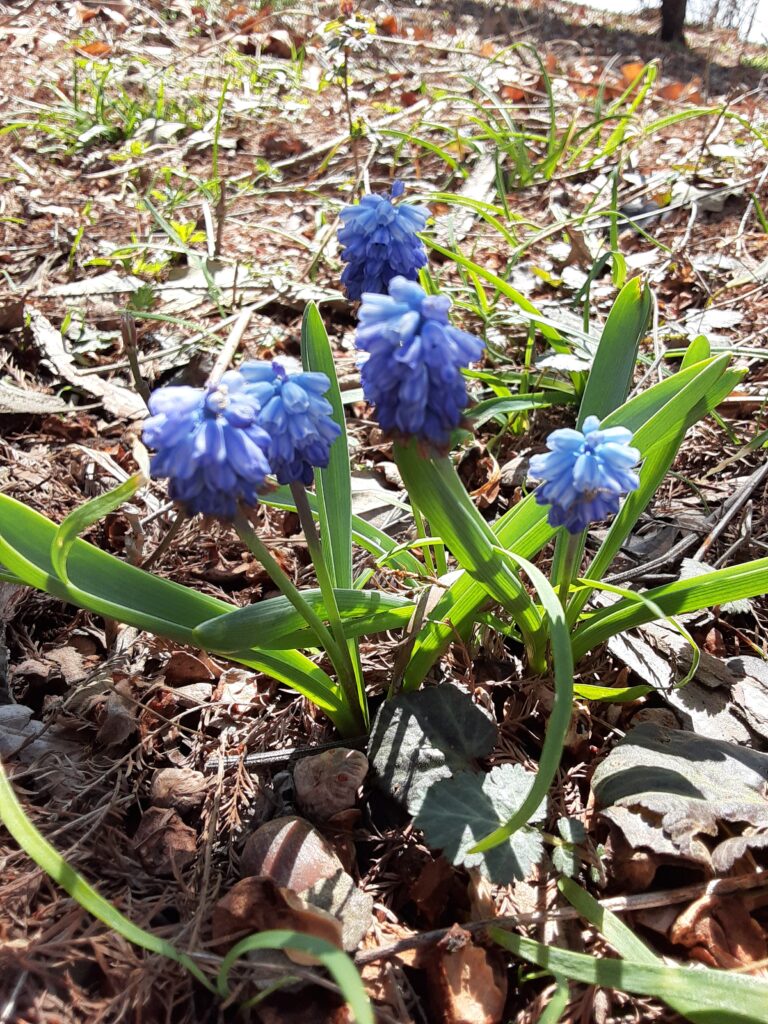
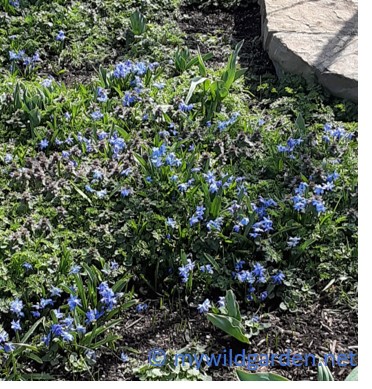
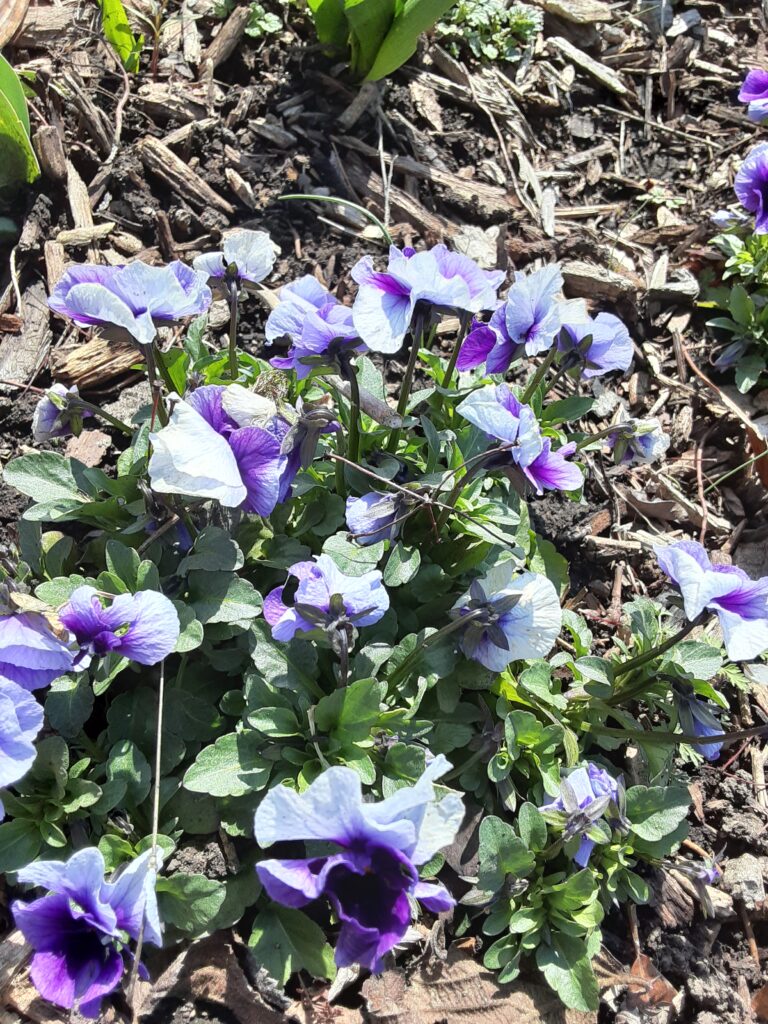
The Woodland Garden, which wasn’t open when I visited last fall, is bursting with bulbs including daffodils, hellebores, scilla, wind flowers, and a wonderful deep purple thing that looks like it’s about to unfurl.
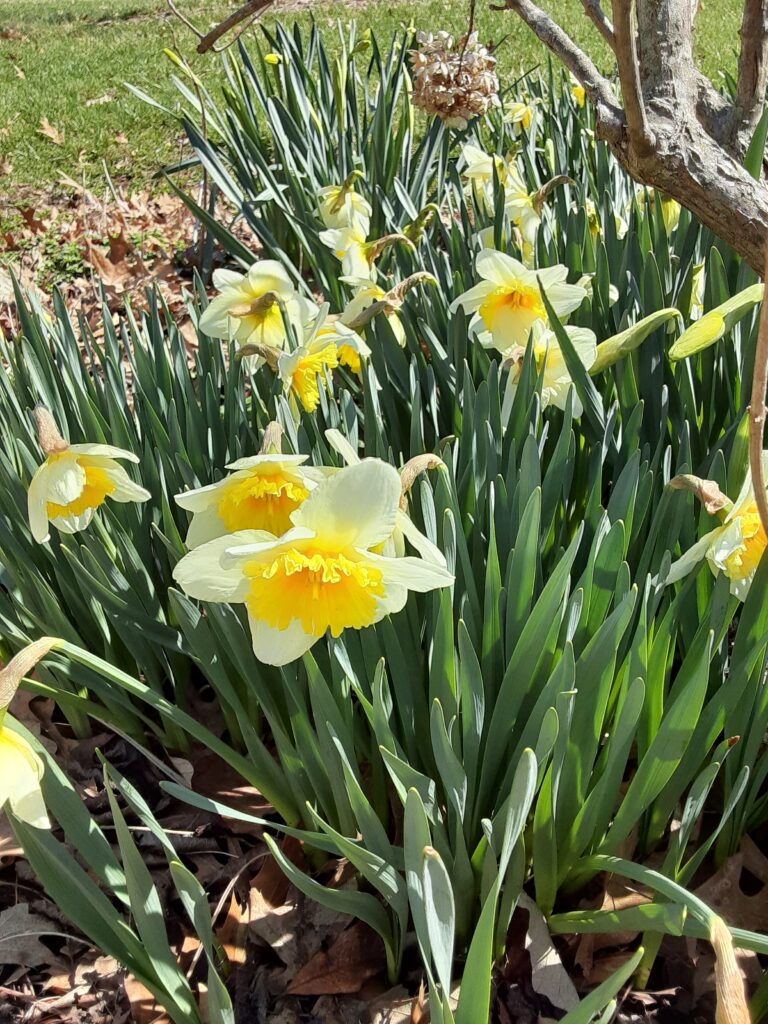
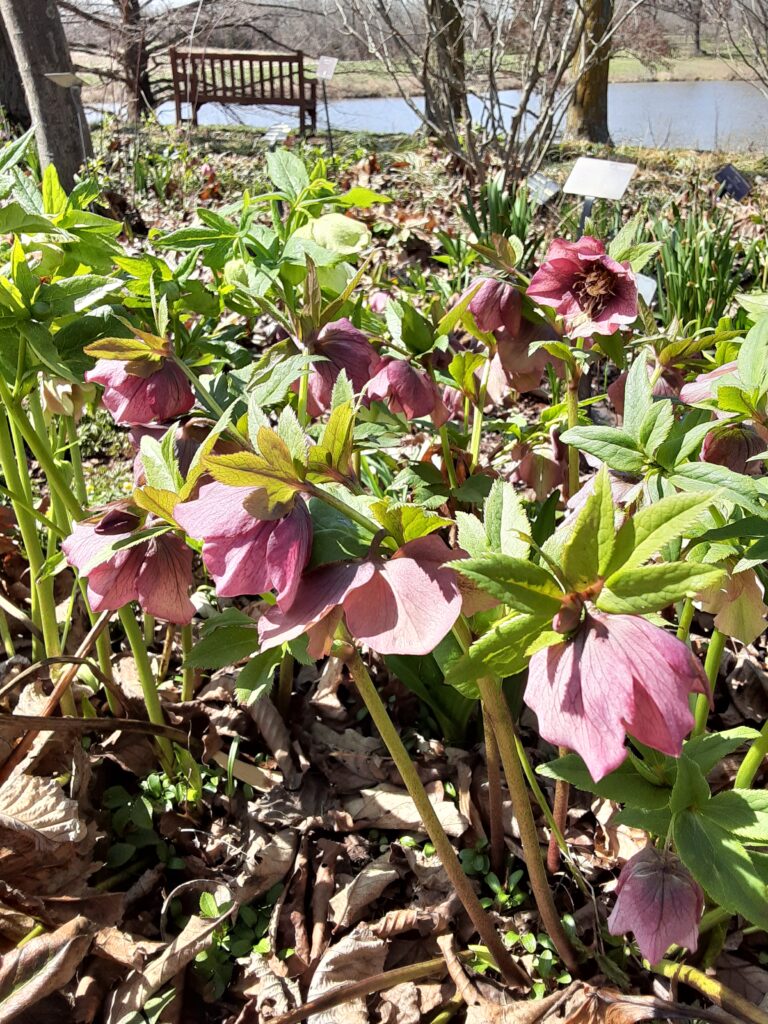
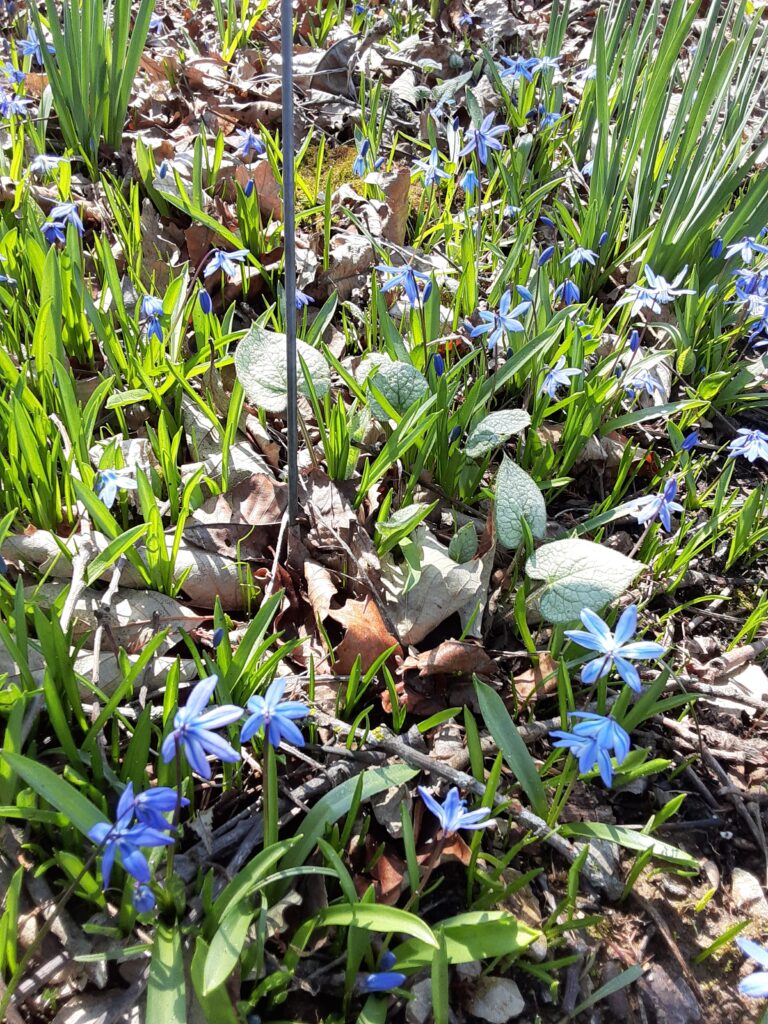
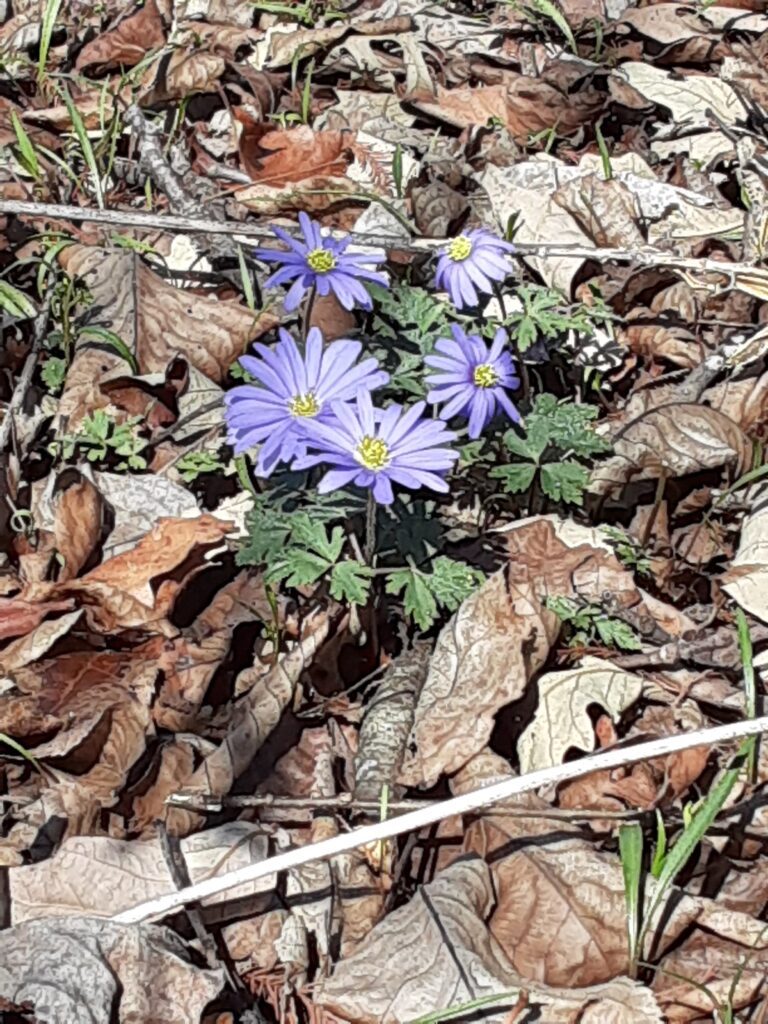
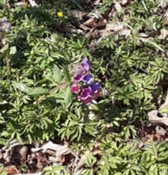
In some areas, signs say what’s still sleeping beneath the brown leaves.
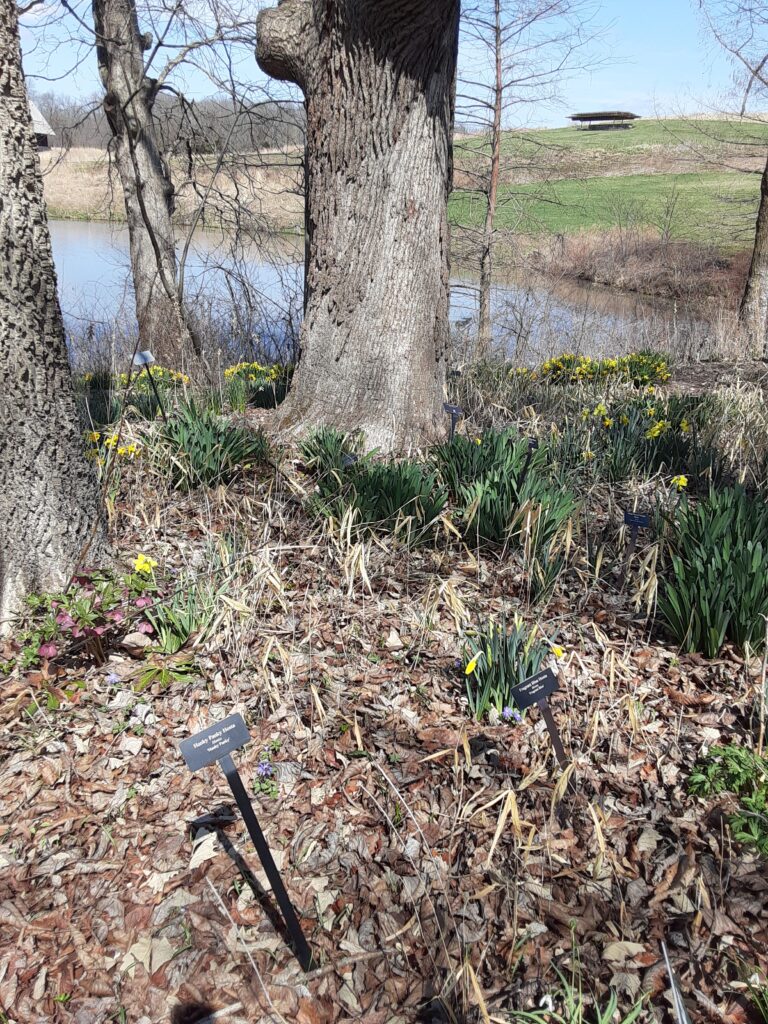
The paved path ends the perennial garden looking out over the lake.
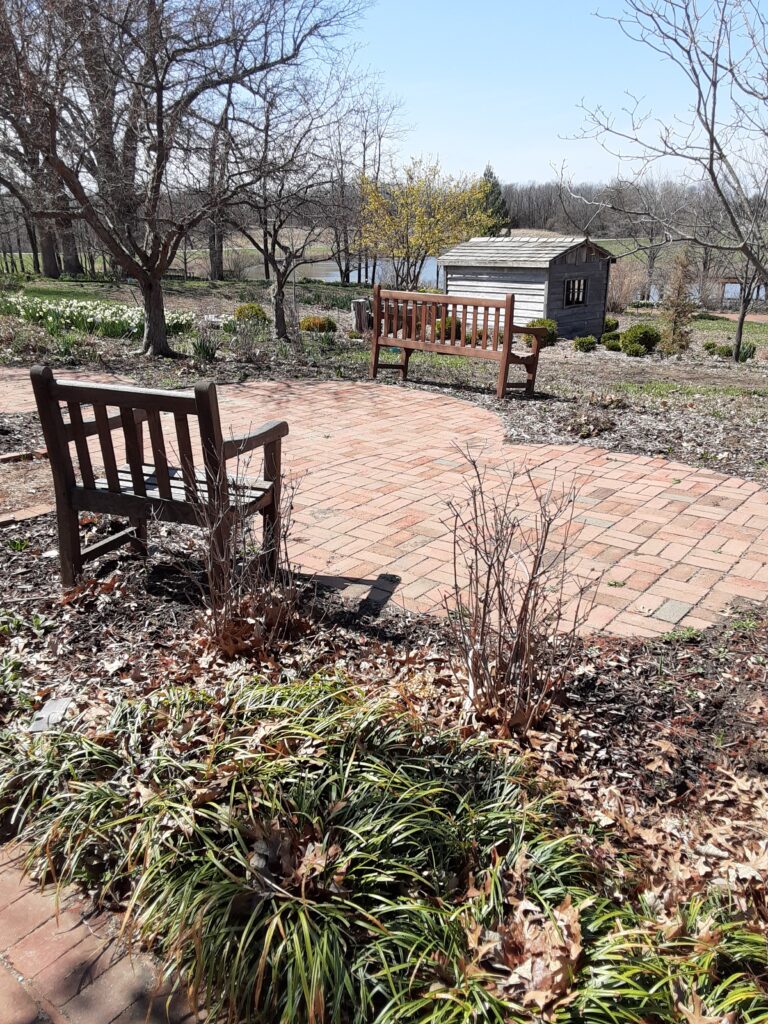
Daffodils are growing here, too. This is a split cup Carlton.
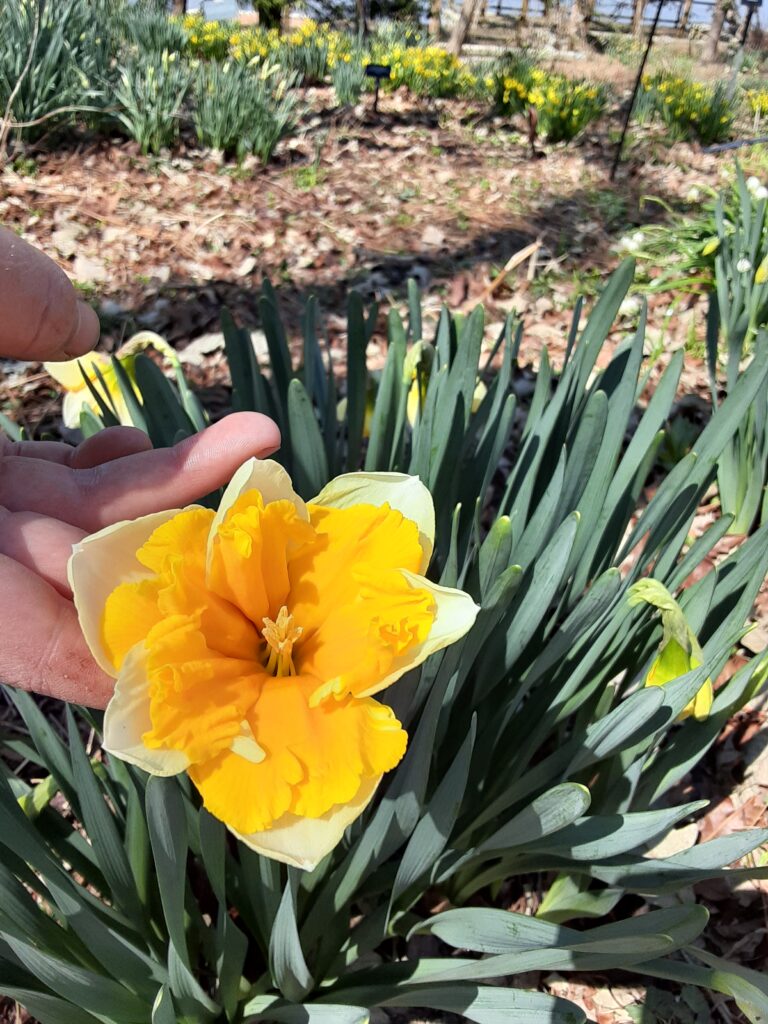
I was interested to learn that the Perennial Garden was the first garden when Powell Gardens opened in 1987. The nearby service buildings were the original visitor’s center. This garden is currently being renovated.
It’s a great time of year.
